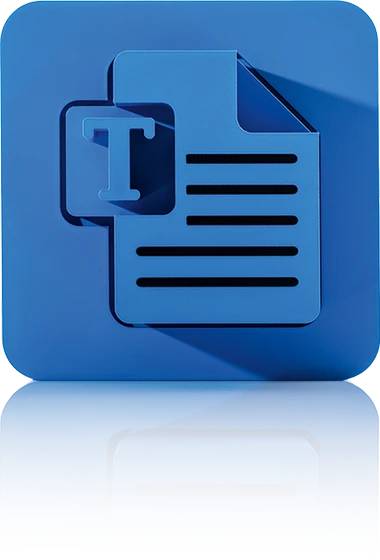Text Management
Manage texts in a media-neutral way and reuse them multiple times

Function Overview
Text management
A character limit can be defined for each text category. You can also define whether texts are generated or maintained manually and on which object they may be maintained. In order to be able to use texts for different media, languages and markets, they are grouped into media-neutral and language-specific text elements and labeled according to market.
Text editing
The integrated XML text editing includes extensive functions for entering and marking up texts. Editing in WYSIWYG mode is similar to MS Word. The text is saved media-neutral with text markups. The text markups can be organized in format groups. Hyphenations can be defined in Adobe InDesign on the basis of language-specific dictionaries. A media-specific preview can be configured for each output channel. Frequently used text fragments and special characters can be stored on buttons for quick insertion.
Texts and text elements
The texts within the text element can have different languages and versions and contain text markups for headings, paragraphs and lists, for example. These text markups can be assigned media-specific InDesign and CSS formats to define the formatting in print and online. The text element can be linked to a product, a publication or an HTML page and can therefore be used multiple times. If changes are made to texts, the links are retained so that the texts are updated at all linked locations.
Structuring texts
Text elements can be maintained in crossbase directly in a structure or as a caption for a media element. Text elements are stored granularly as text modules or as continuous texts and categorized with text types. The validity of text versions can be controlled via assigned validity periods. The text status can be used to determine the exact translation requirement.
Texts with variable placeholders
Product texts can contain variable text modules. If a text with a placeholder is linked to a product, the corresponding value maintained for the product is inserted in place of the placeholder.
Document modules
The cross-product multiple use of text components can be controlled automatically. When maintaining product data, it is possible to select the text modules via the outline or full text search and assign them to a product, a drawing or a table in a specific order.
Editorial structure
Editorial content can be maintained in a structure in the same way as document modules, regardless of the product. The structure contains meaning units, which consist of text bodies, graphics, drawings, tables, etc. and can be used as a logical unit in many publications. The entire sense unit can be labeled country-specifically to enable targeted market-specific communication. By linking one or more sense units to a page section, country-specific technical documentation can be compiled quickly and easily.
Direct connection to ChatGPT
Term management
Crossbase term management supports editors and translators with terminology management. It ensures that terms are managed centrally and used correctly across the board. This ensures that terms are used consistently in corporate communications. Ideally, terminology work begins before translation in order to keep translation and correction costs as low as possible. Translation memory systems (TMS) are only fully effective when the terms are used consistently in the source language. It is therefore advisable to extract the terms from the source texts, record them centrally in the crossbase database, standardize them, describe them and make them available for the TMS with negative terms, synonyms, etc.
Spell check
I look forward to a personal consultation with you.
Call now +49 7031 9881-770
or send me a message
Herby Tessadri
Sales Manager and Authorized Signatory

